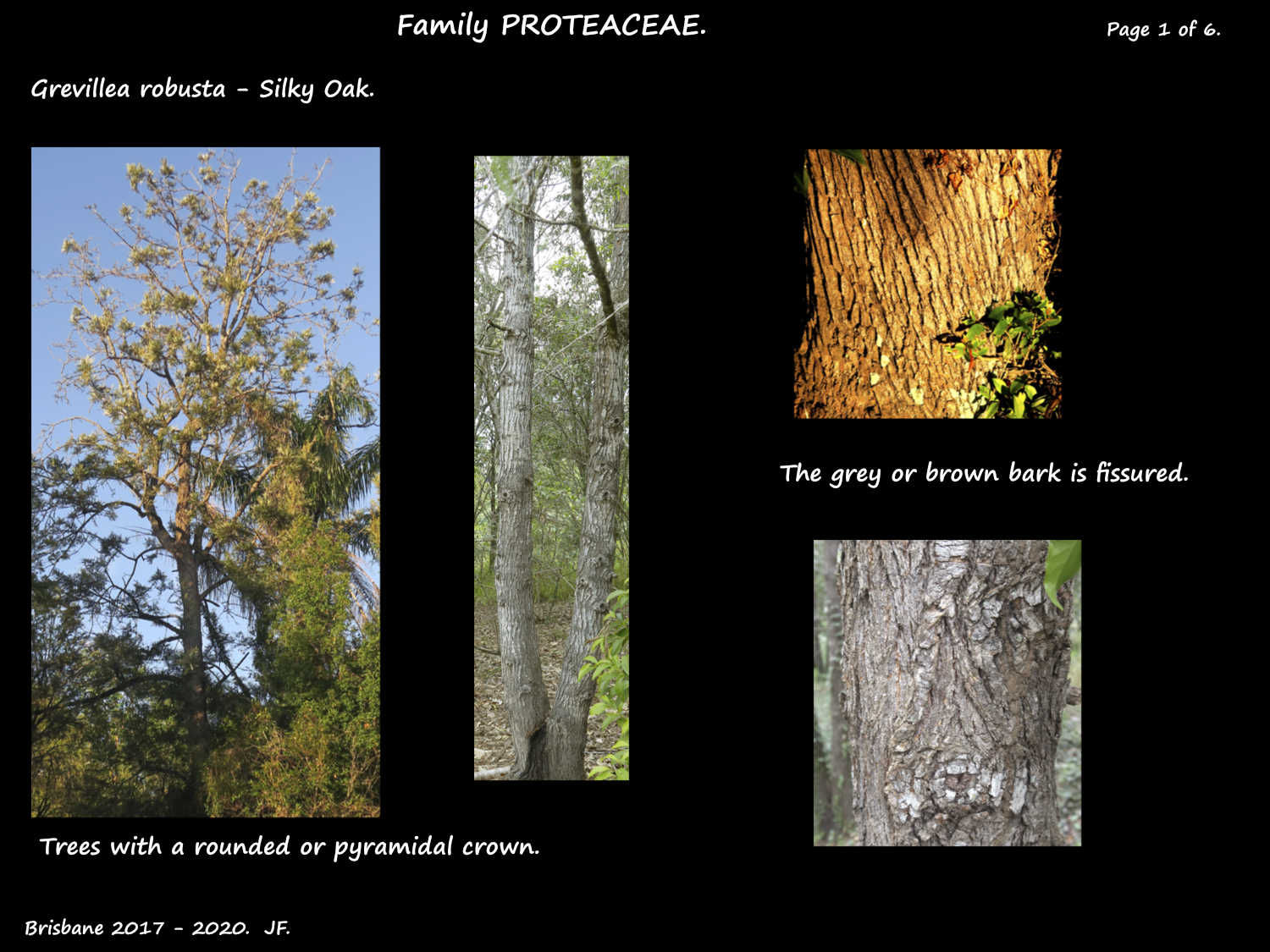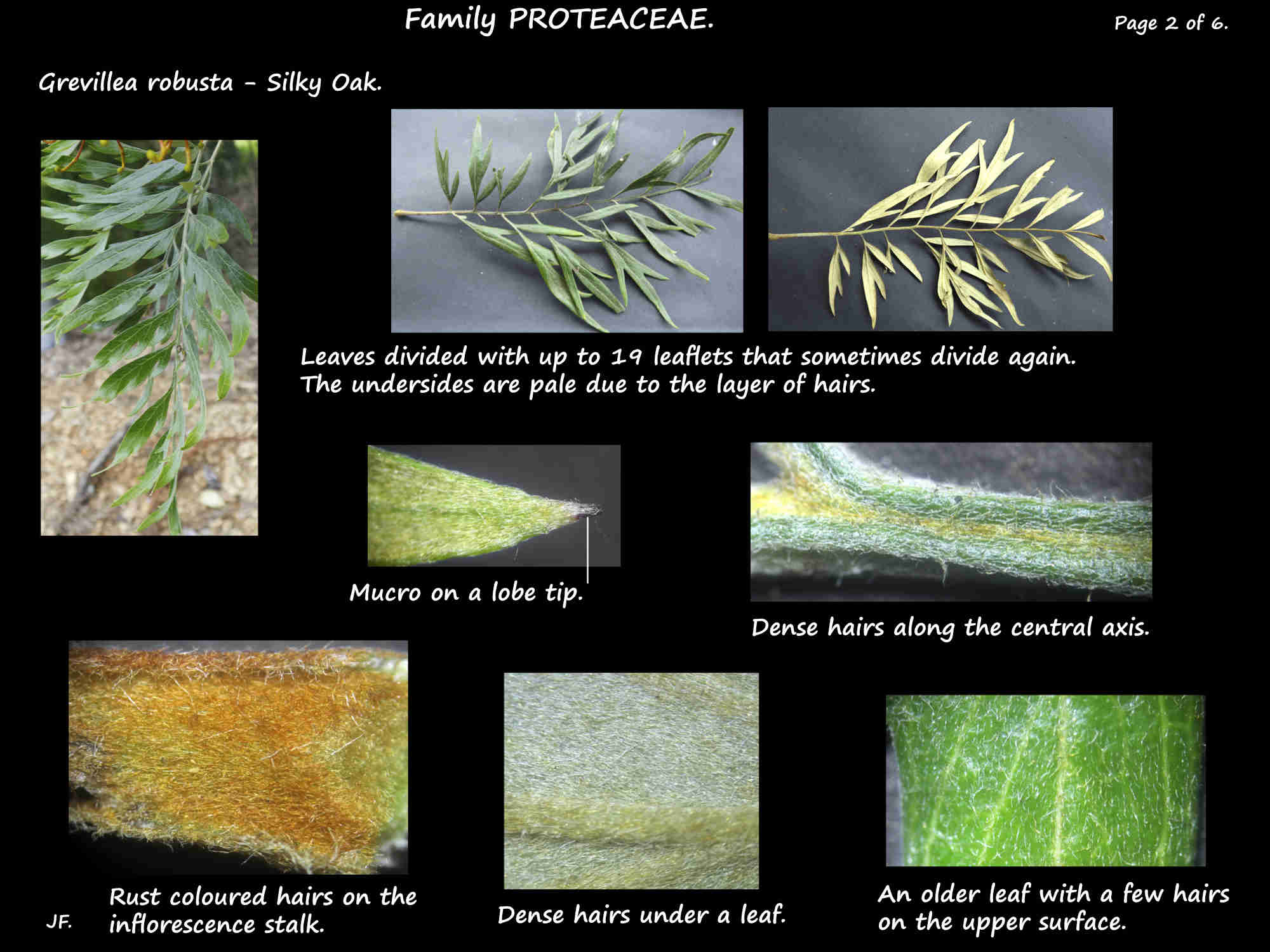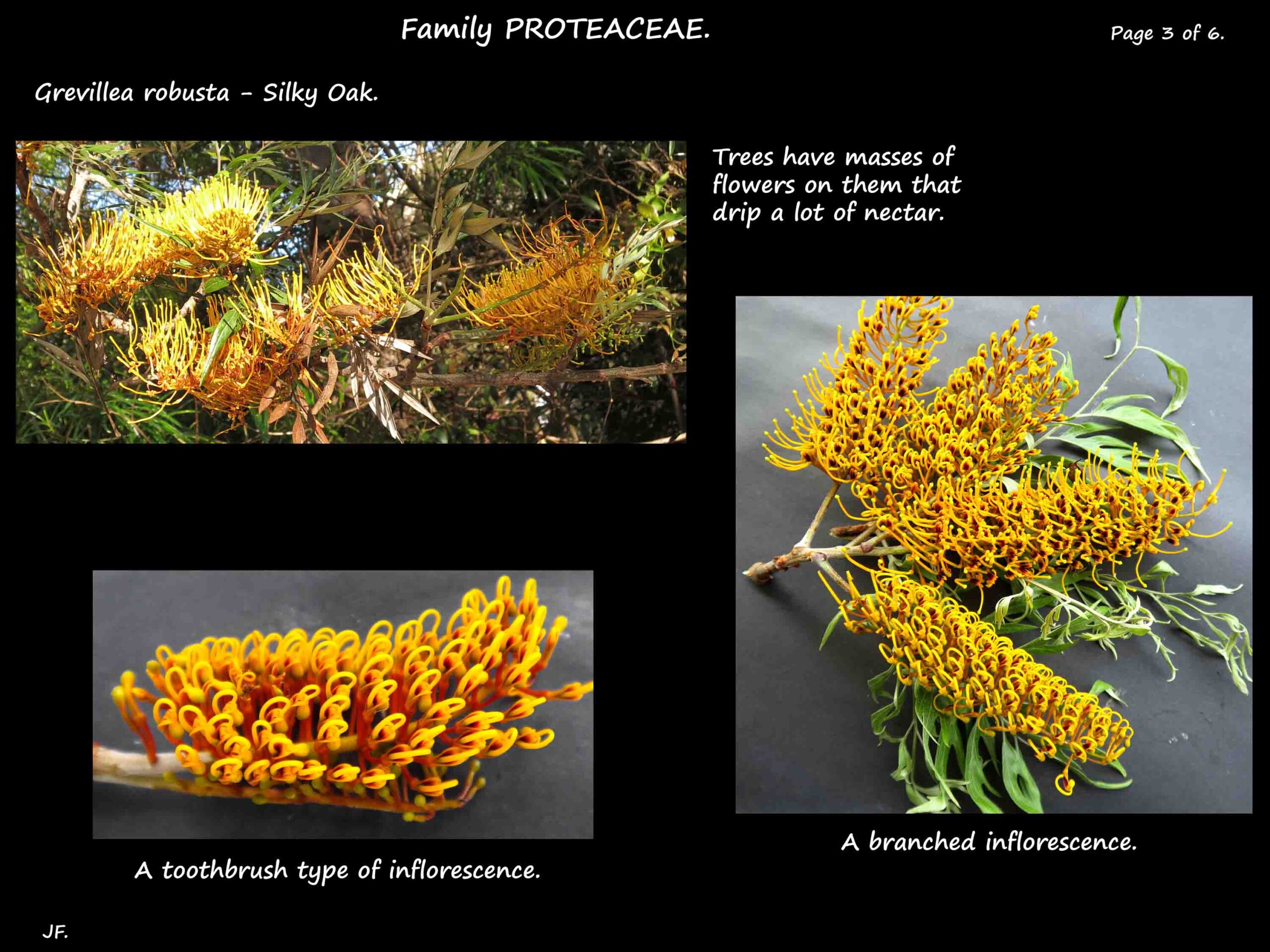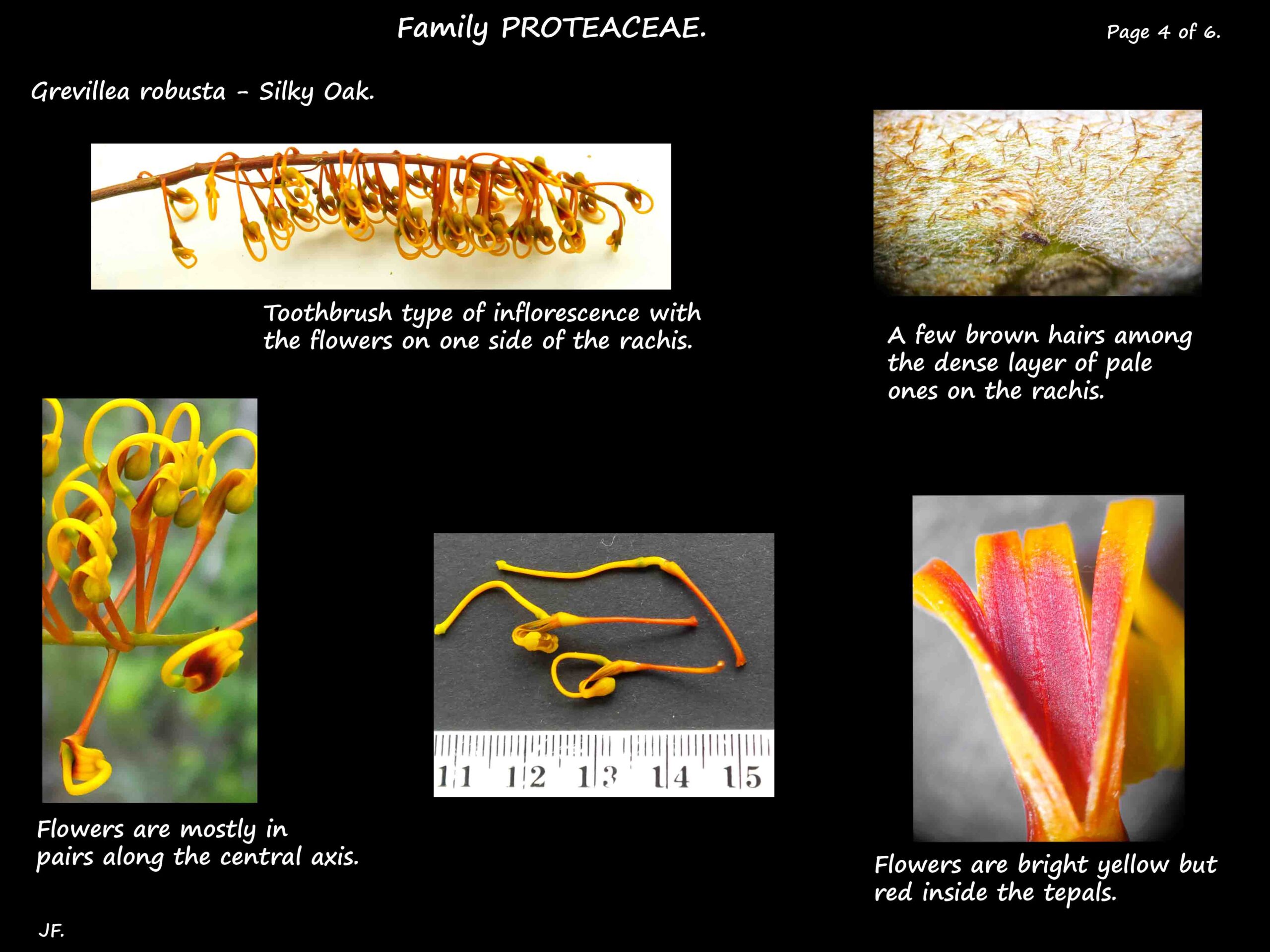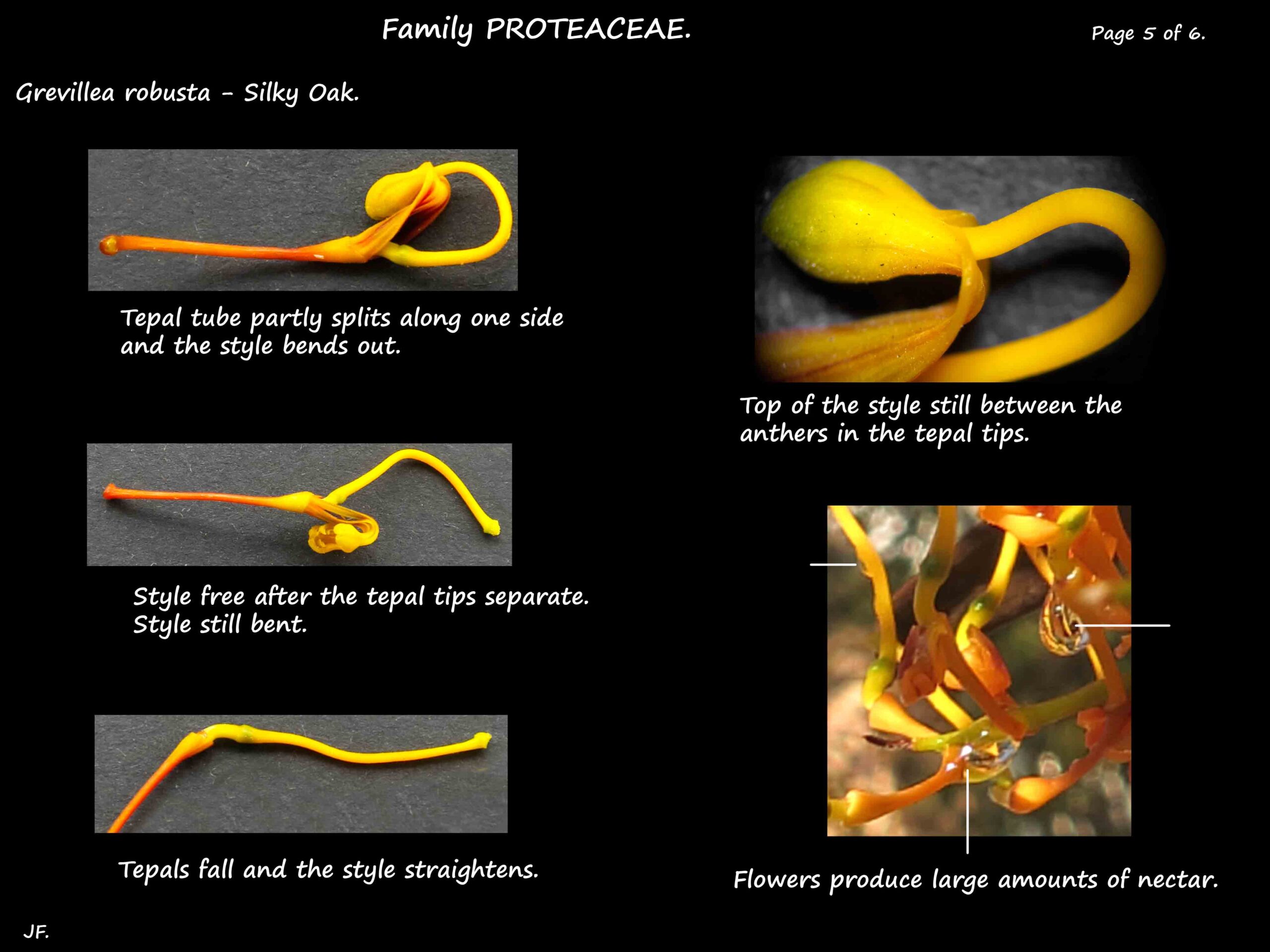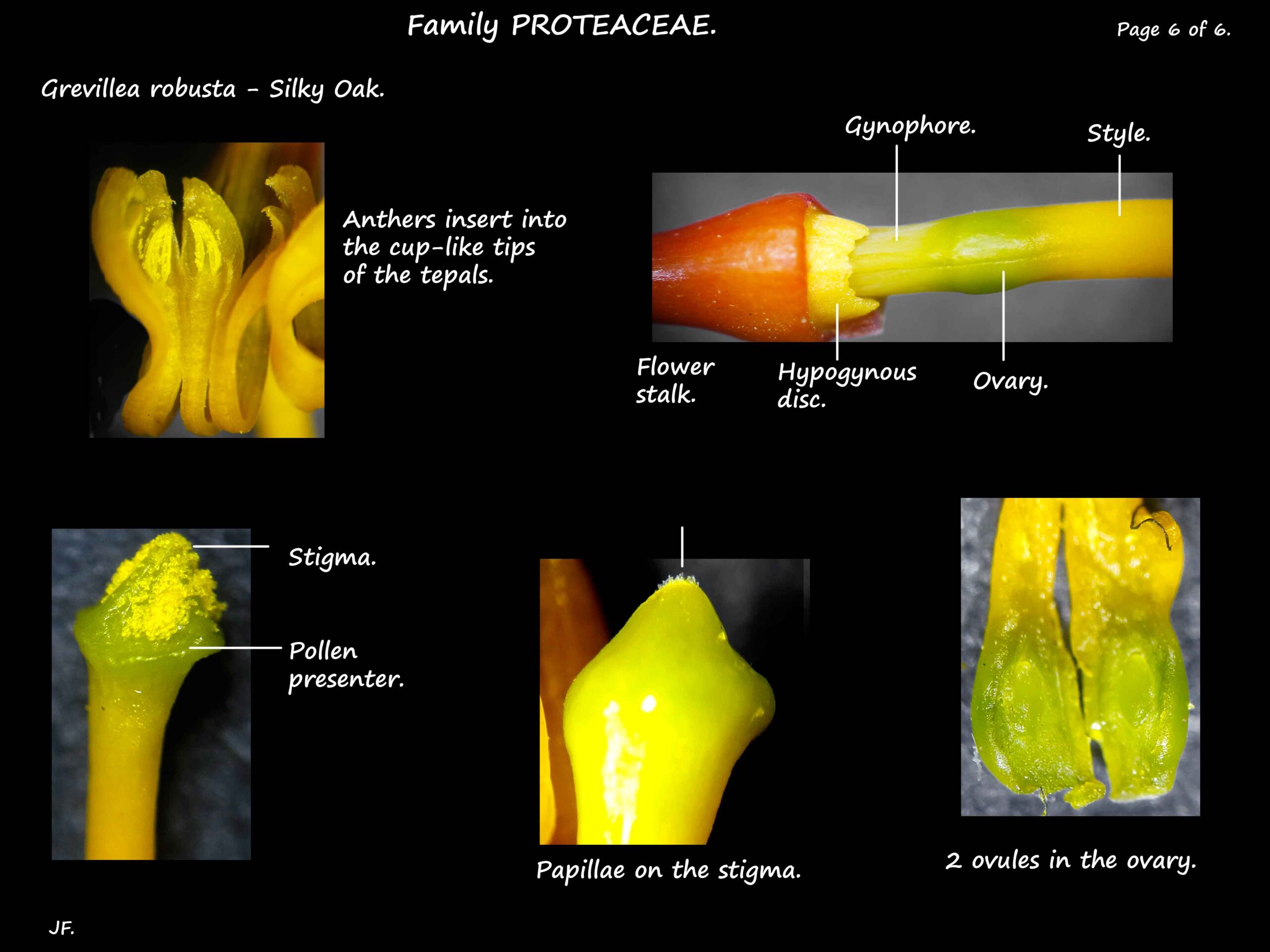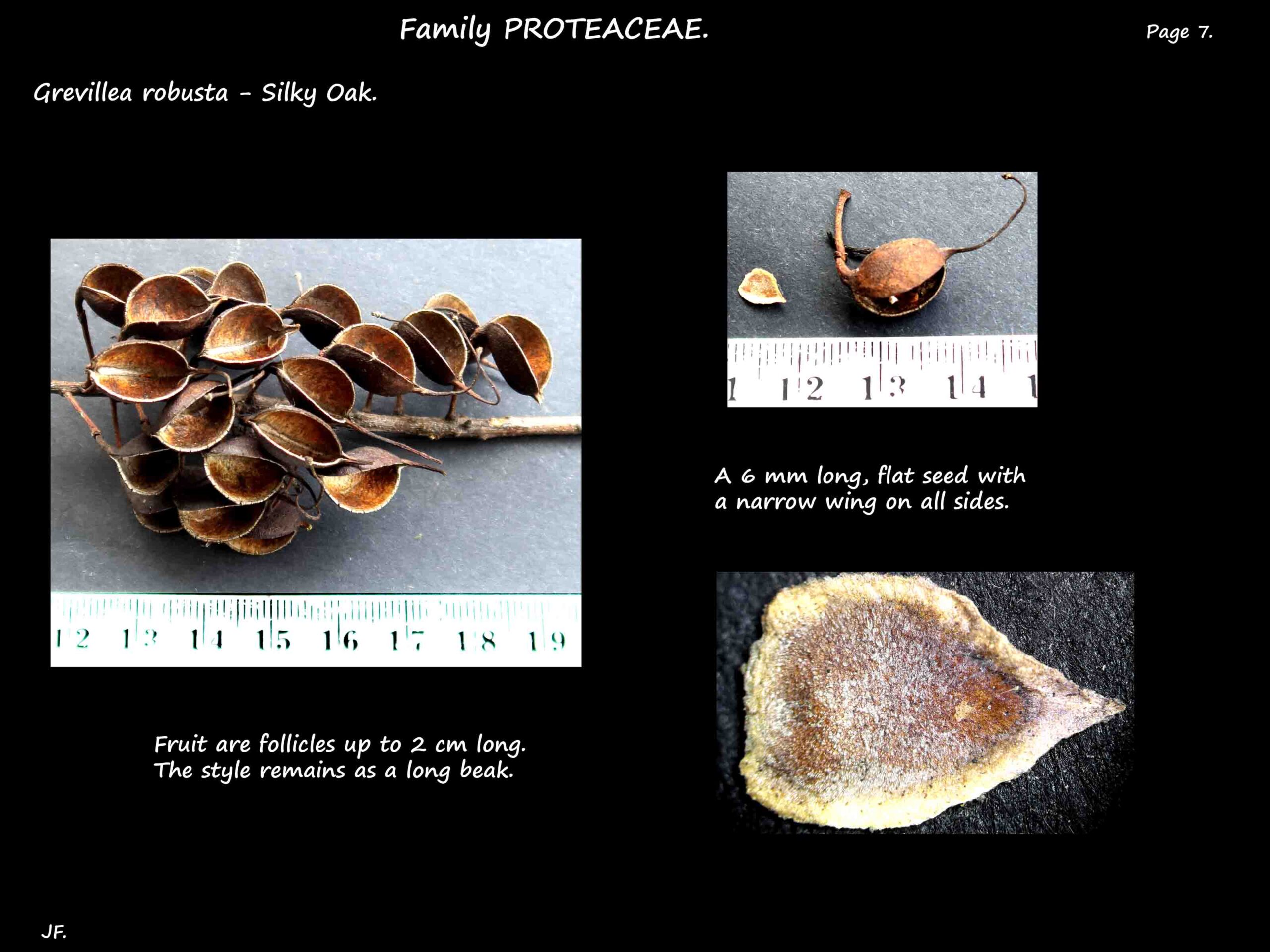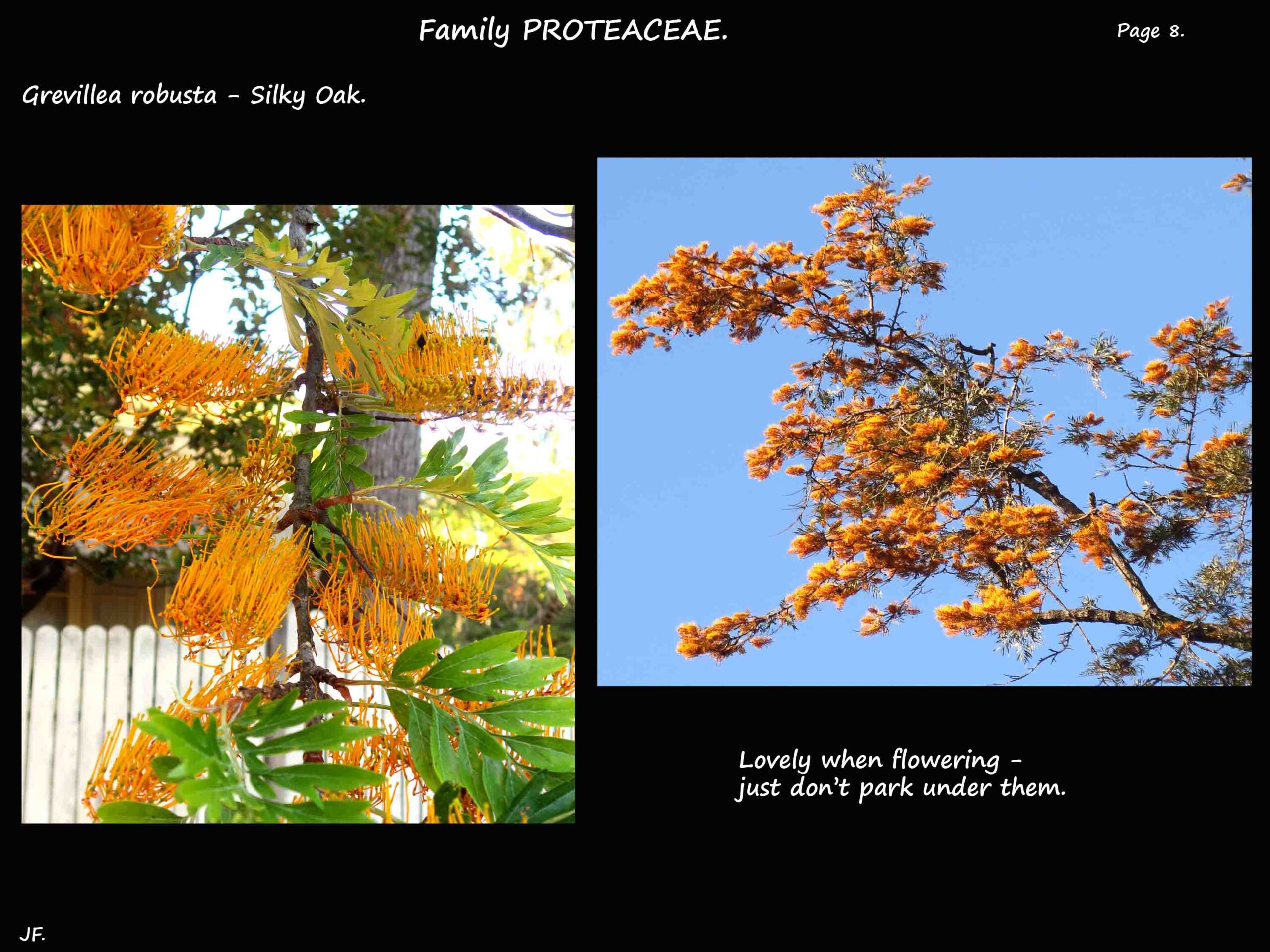Grevillea robusta.
The Silky oak, in Family Proteaceae, is native to coastal Queensland and N.S.W.
It is widely naturalised elsewhere and in some places is a weed.
A long living tree commonly up to 30 m but it can grow to 50 m.
The moderately dense crown is oval or pyramidal.
It is evergreen but looses a lot of its leaves each year.
The dark brown or grey bark is fissured and the small branches have silvery hairs.
The alternate leaves, up to 35 cm long by 15 cm wide are divided.
There are up to 19 leaflets that may be further divided.
There is a tiny mucro on the lobe tips and the edges may be rolled under.
The lower surface is pale due to a dense layer of hairs and there may be some on the upper surface.
The terminal inflorescences, sometimes branched are up to around 14 cm long.
They are toothbrush type with pairs, or groups of 3 flowers along one side of the rachis.
The central stalk (rachis), and the individual flower stalks may be smooth or hairy.
The pedicels are up to 1.5 cm long and the flowers about 1 cm.
Flowers are bright yellow to yellow-orange with some red inside the tepals.
The tubular perianth has 4 tepals with swollen tips in which the 1 mm anthers lie.
There is a partial hypogynous or nectiferous disc.
The ovary is on a stalk (gynophore) around 2.5 cm long.
The style has a conical tip with the stigma and pollen presenter.
The style, eventually up to 2 cm long, grows faster than the tepals.
After the mature pollen is transferred to the pollen presenter the side of the tube splits.
The style first bends then escapes from the tube as its tip becomes free.
The tepals may then separate and eventually fall off leaving the style.
The fruit are curved follicles up to 2 cm long with the style forming a beak.
The seeds are winged.
J.F.
